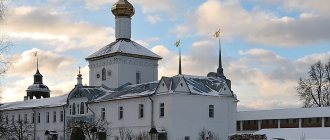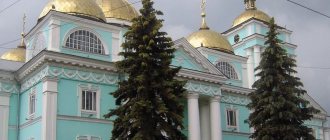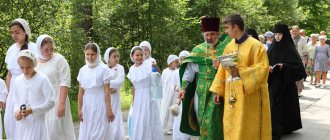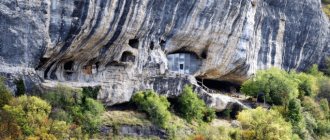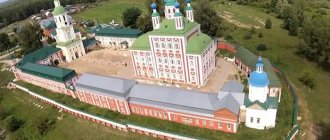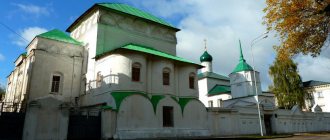Mir
Greece periphery Thessaly Hilandar Monastery (Athos) Map loading in progress...
{"format":"leaflet","minzoom":false,"maxzoom":false,"limit":50,"offset":0,"link":"all","sort":[""], "order":[],"headers":"show","mainlabel":"","intro":"","outro":"","searchlabel":"\u2026 \u0441\u043b\u0435\ u0434\u0443\u044e\u0449\u0438\u0435 \u0440\u0435\u0437\u0443\u043b\u044c\u0442\u0430\u0442\u044b","default":"","import-annotation":false,"width ":"auto","height":"350px","centre":{"text":"","title":"""link":"""lat":40.3400582000000014204488252289593219757080078125,"lon": 24.120711000000000012732925824820995330810546875,"icon":""},"title":"","label":"","icon":"","lines":[],"polygons":[],"circles":[ ],"rectangles":[],"copycoords":false,"static":false,"zoom":8,"defzoom":14,"layers":["OpenStreetMap"],"image layers":[] ,"overlays":[],"resizable":false,"fullscreen":true,"scrollwheelzoom":true,"cluster":false,"clustermaxzoom":9,"clusterzoomonclick":true,"clustermaxradius":80, "clusterspiderfy":true,"geojson":"","clicktarget":"","showtitle":true,"hidenamespace":false,"template":"","userparam":"","activeicon": "","pagelabel":false,"ajaxcoordproperty":"","ajaxquery":"","locations":[{"text":"\u003Cb\u003E\u003Ca href=\"/palomnik/%D0% 9C%D0%BE%D0%BD%D0%B0%D1%81%D1%82%D1%8B%D1%80%D1%8C_%D0%A5%D0%B8%D0%BB%D0%B0% D0%BD%D0%B4%D0%B0%D1%80_(%D0%90%D1%84%D0%BE%D0%BD)\» title=\»\u041c\u043e\u043d\u0430\u0441\ u0442\u044b\u0440\u044c \u0425\u0438\u043b\u0430\u043d\u0434\u0430\u0440 (\u0410\u0444\u043e\u043d)\»\u003E\u041c\u043e\u043d \u0430\u0441\u0442\ u044b\u0440\u044c \u0425\u0438\u043b\u0430\u043d\u0434\u0430\u0440 (\u0410\u0444\u043e\u043d)\u003C/a\u003E\u003C/b\u003E\u00 3Chr /\u003E\u003Ca href=\"/palomnik/%D0%A1%D0%B2%D0%BE%D0%B9%D1%81%D1%82%D0%B2%D0%BE:%D0%90%D0%BD%D0 %BD%D0%BE%D1%82%D0%B0%D1%86%D0%B8%D1%8F\" title=\"\u0421\u0432\u043e\u0439\u0441\u0442\u0432\u043e:\ u0410\u043d\u043d\u043e\u0442\u0430\u0446\u0438\u044f\»\u003E\u0410\u043d\u043d\u043e\u0442\u0430\u0446\u0438\u044f\u003C/a\ u003E: "'\u0425 '' 4f\u0442\u043e\u0433\u043e ; \u0441\u043e\u0441\u0442\u043e\u0438\u0442 \u0432 \u044e\u0440\u0438\u0441\u0434\u0438\u043a\u0446\u0438\u0438 \u041a\u043e \u043d\u0441\u0442\u0430\u043d \u0442\u0438\u043d\u043e\u043f\u043e\u043b\u044c\u0441\u043a\u043e\u0433\u043e\u043f\u0430\u0442\u0440\u0438\u0430\u0440\u 0445\u0430,\u043d\u043e\ u0434\u0443\u0445\u043e\u0432\u043d\u043e\u043f\u043e\u0434\u0434\u0435\u0440\u0436\u0438\u0432\u0430\u0435\u0442\u0441\u04 4f\u0421\u0435\u0440\u0431\ u0441\u043a\u043e\u0439 \u041f\u0440\u0430\u0432\u043e\u0441\u043b\u0430\u0432\u043d\u043e\u0439 \u0426\u0435\u0440\u043a\u0 43e\u0432\u044c\u044e,\u044f \u0432\u043b\u044f\u044f\u0441\u044c \u043e\u0434\u043d\u043e\u0439 \u0438\u0437 \u0432\u0435\u043b\u0438\u0447\u0430\u0439 \u0448\u0438\u0445 \u0441\u0435 \u0440\u0431\u0441\u043a\u0438\u0445 \u0441\u0432\u044f\u0442\u044b\u043d\u044c","title":"\u041c\u043e\u043d\u0430\u0441\u0442\u 044b\u0440\ u044c \u0425\u0438\u043b\u0430\u043d\u0434\u0430\u0440 (\u0410\u0444\u043e\u043d)","link":"""lat":40.340058200000001420448825228959 3219757080078125,"lon":24.120711000000000012732925824820995330810546875,"icon ":""}],"imageLayers":[]}
40.27819; 24.217071
Greece, periphery of Thessaly, autonomous monastic state of the Holy Mountain
periphery Thessaly
Greece
Hilandar
occupies 4th place in the Svyatogorsk hierarchy; is under the jurisdiction of the Patriarchate of Constantinople, but is spiritually supported by the Serbian Orthodox Church, being one of the greatest Serbian shrines. Located on the northeastern side of the Athos Peninsula. Patronal feast: November 21 (December 4), Entry into the Temple of the Blessed Virgin Mary.
History[edit]
Hilandar Monastery is dedicated to the Nativity of the Blessed Virgin Mary. Judging by some handwritten sources, a monastery with that name existed already in the 10th century, but over time fell into disrepair. Its name is also connected with this stage in the history of the monastery: initially it was called “the monastery of George Hilandar” - that was the name of the hermit who labored in the monastery at the end of the 10th century. From the first monastery in Hilandar, only the well has survived. In 1198, by decree of the Byzantine Emperor Alexy III Angelos, the monastery was transferred to the Serbian saints Sava and his father Stefan Nemana (monastically Simeon). Through their efforts, the restoration of the monastery began. The care of Hilandar was continued by his second ktitor - the Serbian king Stefan Uros Milutin, and after him - king Stefan Dusan, who was called the autocrat of the Greeks, Serbs and Bulgarians (he, by the way, is also known in Svyatogorsk legends for having climbed to the very top of Mount Athos on horse). Having become the most significant Slavic monastery on the Holy Mountain, Hilandar became a bridge connecting Serbia and Byzantium with ties of friendship, the cradle of Serbian spirituality and the center of the spread of the hesychast tradition in the Slavic world. It is significant that almost all the primates of the Serbian Church were associated with this monastery.
The monastery was patronized by the Byzantine emperors Andronikos II and Michael VII Palaiologos and the Russian tsars. Gradually, Hilandar acquired many lands, so that at the moment his possessions exceed in area even the plots of the Great Lavra.
In the 18th century, the monastery was dominated by monks from Bulgaria. Among them, it is worth highlighting Paisiy Hilandarsky, the author of the first text of the newest period of Bulgarian writing - “History of the Bulgarian People” (1762).
The inhabitants of Hilandar supported the Greeks who rebelled against Ottoman rule, and the monastery was occupied and ravaged by Turkish troops, who caused significant damage to it. Hilandar was also seriously damaged by fires in 1722 and 1891. In 1896, several years after the second disaster, the monastery was restored with donations from the Serbian Tsar Alexander.
The cathedral temple of Hilandar was built at the beginning of the 13th century, on the site and taking into account the architectural features and proportions of the catholicon that existed here in the 10th century, i.e. in the early period of the monastery's life. It is considered one of the most beautiful Athonite cathedrals and a characteristic example of Byzantine temple architecture. The original frescoes dated back to 1320 and belonged to the famous master George Calliergius from the Greek province of Macedonia. Unfortunately, later the temple was painted again (1803–1804), and a significant part of the ancient frescoes was lost. The wooden iconostasis of the catholicon dates back to 1774, and some of the icons in it are from the 16th century. The ancient marble iconostasis has also been preserved behind it. In the western part of the lithium narthex you can see the image of the Serbian king Stefan V Urosh Milutin and his father-in-law, the Byzantine emperor Andronikos Palaiologos. There is also a banner brought to the monastery by Alexander I Obrenovic in 1896.
Around 1200, the “Tower of St. Sava” was built, which was completed several times in subsequent years. On the fourth floor of the pier there is the chapel of John the Baptist, painted at the end of the 17th century. Next to the tower, a paraclis of the Archangels was built in the 14th century. Next to the phial, painted in 1847, there are two cypress trees planted by Saint Sava himself. Several times they became a refuge not only for numerous songbirds, but also for monastery treasures. In moments of danger, the monks hid their most valuable things there. The Hilandar bell tower is located in the eastern building of the monastery. On its last fourth floor is the paraklis of St. John of Rylsky, and to the south of it there is a monastery hospital and the chapel of the Intercession of the Mother of God, built in 1740 at the expense of Archimandrite Gerasim.
On February 19, 2004, a terrible fire occurred in Hilandar. Overnight, more than two-thirds of the buildings burned down; mainly only those that were founded by Saint Sava himself were preserved. The vast archondarik also burned down. Anyone who comes to Hilandar can venerate the “Three-Handed” icon of the Mother of God, and can even have a meal, but you can’t always count on an overnight stay. Work to restore the monastery continues: the Serbian government and many organizations and individuals from Greece, Serbia and other countries provided great assistance to Hilandar.
In 1979, a two-story museum was opened in Hilandar, including exhibits from the monastery sacristy, library and archive. One of the main treasures is the royal gates, contemporary with the founder of the monastery, George Hilandar. The mosaic icon of Hodegetria from the 12th century is widely known; other unique treasures stored in the museum are also of great interest.
Hilandar owns several cells in the area of the Athonite capital of Kareia. Among them, it is worth highlighting the “Typikarnitsa” (it contains the miraculous image of the Mother of God “Mammal”), the “Pateritsa” (the staff of Sava of Serbia is stored) and the cell of the Assumption of the Blessed Virgin Mary, better known as the “Molyvdoklisia” (it was painted by masters of the Cretan school in the 16th century ).
Shrines of the monastery
The cathedral church of Hilandar surprises with its collection of miraculous icons of the Mother of God. The most famous is the “Three-Handed Lady,” standing on the abbot’s place in the monastery and demonstrating the authority of the Mother of God over the monastery.
The monastery also preserves an ancient vine that rose from the ground where Simeon the Myrrh-Streaming was buried. Now the appearance of the vine leaves much to be desired, nevertheless it blooms and bears fruit, its fruits act as a cure for diseases and infertility. The grapes collected from it are dried and given to pilgrims who come to pray for the continuation of offspring.
Speaking about the shrines of the monastery, we must not forget about the fragments of the gifts of the Magi to the Infant Christ, which also include the instruments of the Lord’s passion, particles of the True Cross of the Lord, and a number of relics. The altar of the cathedral became the repository of the Gospel; white leather was used to create its sheets, all inscriptions were made in gold letters.
© Maxim Ershov
Shrines[edit]
In the cathedral church to the right of the choir there is a silver-plated tomb in which the incorruptible and myrrh-streaming body of the saint rested. Simeon, the founder of the monastery, was transferred by his great son to Serbia to pacify the unrest that arose there. From this tomb a vine grew on the outside of the temple, the fruits of which have wonderful healing powers, especially for barren spouses. The monastery houses many books with photographs of newborn children and letters from their grateful parents.
The miraculous icon of the Mother of God “Three-Handed” resides in Hilandar. The history of this image is connected with the life of St. John of Damascus - a theologian, a zealous fighter against the iconoclastic heresy, which was propagated in the 8th century by the Byzantine king Leo the Isaurian. The heretic emperor slandered the Saint, who served at the court of the Damascus emir. The emperor forged a letter in which the Christian John allegedly offered the emperor a way to attack his Muslim ruler. The emir ordered the Saint's right hand to be cut off. At night, John put the severed hand to his hand and, standing in front of the icon of the Mother of God, asked Her for healing. A miracle happened: the brush grew in! In gratitude for the healing, John ordered a silver brush and applied it to the icon. (His example is followed to this day by pious Greeks who received healings through the prayers of the Mother of God or Saints: on many miraculous icons you can see hanging silver handles, legs, coins, watches, orders, etc.) After this, John took monastic vows and retired with this image to the Lavra St. Savva the Sanctified. The “Three-Handed” remained there for five hundred years, until the Lavra was visited by the future great Serbian saint Sava, to whom it was handed over. First St. Savva took the icon to Serbia, but when trouble arose there, the icon was placed on a donkey and allowed to wander according to the will of the Queen of Heaven. And the donkey came to Svyatogorsk Hilandar.
At first, the “Three-Handed One” was in the altar of the cathedral. But after some time, disorder arose in the monastery related to the choice of a new abbot: the monastery fathers could not come to a common decision. And then one day the brethren saw that the image of the “Three-Handed Lady” had been transferred from the altar and was standing in the abbot’s place. The icon was moved back, and the cathedral was carefully closed. However, despite this, the next day “Three-Handed” again found herself in the place of the abbot. When this was repeated for the third time, the brethren realized that the Most Holy Virgin herself wanted to be the abbess in their monastery. Since then, in Hilandar they do not elect an abbot, and before any important matter, the monks take a blessing from their Abbess - the “Three-Handed One”. It is interesting that this icon is double-sided: on one side the Mother of God is depicted, on the other St. Nicholas the Wonderworker.
The monastery houses the greatest shrine - the petrified Blood of the Savior. Also here are parts of the Life-giving Cross of the Lord, His crown of thorns, reeds and shrouds; some myrrh from the gifts of the Magi. The monastery also houses the venerable head of the prophet Isaiah and the relics of the Great Martyr. Panteleimon and Theodore Stratilates, martyr. Eustratia and Marina, St. Gregory the Theologian, Eutychius and Nicephorus, Patriarchs of Constantinople, St. Simeon the Stylite, martyr. Artemy and other saints.
The venerated icon of the Most Holy Theotokos “Mammal” is kept in the monastery.
Sights of the monastery
The appearance of the monastery surprises its guests with obvious Balkan features: the impressive tower buildings have narrow windows and a tier of decorative stone white and red arches, as if transferred here straight from the mountain monasteries of Serbia. The residential building is decorated with white and red wooden terraces, so similar to the caravanserais of the Balkans from the Middle Ages.
The history of the main cathedral of the monastery dates back to the 14th century; at one time it was consecrated in honor of the Entry of the Blessed Virgin Mary into the Temple. Its multi-tiered architecture has a number of Balkan and Byzantine features, bringing it closer to the classical basilicas of Constantinople. The interior amazes with its magnificent frescoes: they are quite modern and have careful attention to detail; their appearance dates back to the beginning of the 19th century. The entrance to the altar is closed with a carved wood panel, behind which is an ancient marble screen. A bowl for holy water, made in the 18th century, is also available for inspection.
The territory of the monastery includes 11 small churches, they contain a huge number of relics, including the staff with the lid of the tomb of St. Sava, here tourists can admire the tree of his vine, the fruits of which were used to treat female infertility, particles of the Life-giving Cross of the Lord, a crown of thorns and a shroud Christ, as well as particles of the relics of John the Baptist and the prophet Isaiah. The monastery museum keeps a number of church vestments and chairs decorated with mother-of-pearl. The Hilandar Monastery has a magnificent treasury and a library with a rich collection, it boasts 800 Slavic manuscripts, parchment manuscripts with church texts and music, as well as 7 thousand book editions.
Monastery tower, © Maxim Ershov
A little history
The monastery was founded in 1198 by the Serbian ruler Stefan Nemanja and his son Rastko, who took monastic vows under the names of Simeon and Sava and subsequently became one of the most revered Serbian saints. Initially, Hilandar was subordinate to the Vatopedi monastery, but later gained independence and, in turn, accepted seven other monasteries. Solid financial support from the Serbian princes ensured a comfortable existence for the monastery even during the difficult years of the Turkish occupation. Alas, the fires did not spare the monastery: it burned twice, as a result of which the influx of monks significantly decreased. However, today it is one of the most well-kept, lively and hospitable monasteries of Athos with a brethren of about 70 monks.
In Hilandar there is kept a tree of the vine of St. Sava, the fruits of which were used to heal female infertility.
The Hilandar monastery on Holy Mount Athos flourished for a long time
Beginning in 1293, the Hilandar monastery began to flourish. This happened to his second patron, the Serbian king Stefan Uros. God-loving Serbian patriarchs and bishops constantly emerged from the walls of the monastery.
The monks of the monastery were famous for their spiritual wisdom. The Serbian kings always donated a lot to Hilandar, located on Mount Athos. Translations of spiritual literature written here from Greek into Slavic served as the main source of spiritual enlightenment for Serbia, and through it they fed other lands.
King Urosh III. Lithograph by Anastas Jovanovic. The name of the Serbian king Uros III is associated with a long period of prosperity of the Mount Athos monastery of Hilandar. Photo: upload.wikimedia.org
With the fall of the Byzantine Empire, many monasteries lost their benefactors. Hilandar flourished even during the time of Turkish rule. Even in difficult conditions, the monastery maintained a stable existence.
It is worth noting that many times the prot was elected from among the Serbian monks who were members of his brethren. This indicates the importance of the Hilandar Monastery on the Holy Mountain.
The Hilandar monastery began to decline starting in the 17th century.
The monastery began to decline only in the 17th century. At this time, the Turks abolished Serbian autonomous rule and forced the country to submit to the Ecumenical Patriarch. He began to perform in the country the functions of both the spiritual and temporal ruler of the Christian subjects of the Ottoman Empire.
The monastery was restored thanks to pious merchants from Venice, as well as donations from the Bulgarians. The influx of monks from Serbia was constantly decreasing, but the monastery retained its Slavic character, and at the end of the 18th century Hilandar was already predominantly Bulgarian.
Introductory part
Our God-bearing and venerable and blessed Fathers, the luminaries of the universe, earthly Angels and heavenly men, initially learned monastic life from the tradition of the Holy Spirit. Therefore, they were enlightened by the grace of God and, having infused Christ into their beautiful souls, for the sake of their pure lives they showed victory over the devil. Having been inflamed by his many temptations and having overcome them, they shone brighter than the sun and became whiter than snow, and, spreading mental wings of immaterial gold, took off like eagles soaring in the sky to ascend to the One who said: “Whoever thirsts, let him come to Me and drink.” (John 7:37) “from the fountain of living water” (Rev. 21:6). And again: “Whoever loves father or mother more than Me is not worthy of Me” (Matthew 10:37). Whoever loves a wife, or children, or a field, or possessions more than Me is not worthy of Me.
Listening to this, one must leave everything and follow His commandments, taking up the cross, following Christ and teaching by deed to despise carnal things and how to care for the soul, immortal things (Matthew 10:38). Those who seek Him follow Him, who said: “Come to Me, all you who labor and are heavy laden, and I will give you rest. Take My yoke upon you and learn from Me, for I am meek and lowly in heart. For My yoke is easy and My burden is light” (Matthew 11:28-30).
And again, calling the poor in spirit blessed, He promises that they will see His face; To those who hunger and thirst, He promises that they will be filled, and to those who mourn, He promises endless comfort (Matthew 5:3-6). Desiring this, they follow the sweet and kind Shepherd and Teacher Christ, suffer for His sake and endure many torments in order to receive perfect crowns in heaven. They are crucified alive, rejecting their will, having voluntarily sacrificed themselves to the One who was sacrificed for our sake; they left everything in the world, saying to each other: “Whoever loves the world does not have the love of the Father, and the world passes away, but he who does the will of God abides forever” (1 John 2:15, 2:17).
Therefore, I, the sinful and lazy monk Savva, the last of all, beg, falling down and crying: my brothers and fathers, let us become like those wonderful merchants who bought themselves a wonderful thing, for they gave away all their property and bought the only priceless pearl - Christ ( Matthew 13:45). Be jealous of the wise virgins who filled their lamps with oil and were ready to go out joyfully to their bridegroom (Matt. 25:1). Take care of yourselves, my beloved, for I fear, and tremble, and am obsessed with fear: lest one of you remain outside the gate, like the other five virgins, and lest we hear that terrible and menacing answer: “I don’t know.” you, where you are from; Depart from Me” (Luke 13:27). Fearing this answer and wanting us to hear that beautiful voice: “Come, you blessed of My Father...” (Matthew 25:34); enter “into the joy of your Lord” (Matthew 25:21), let us humble ourselves here in order to be exalted there, weep here in order to be comforted there, let us hunger and thirst here in order to be satisfied there; Let us be poor here so that we may find a merciful God there.
If you find sorrow, then “count it all joy, my brothers, when you fall into various temptations, knowing that the testing of your faith produces perseverance; But let patience have its perfect work…” (James 1:2-4). “Blessed is the man who endures temptation, for when he is tried, he will receive the crown of life, which the Lord has promised to those who love Him” (James 1:12). For He said: “He who endures to the end will be saved” (Matthew 10:22).
“Do not be deceived, my brothers” (James 1:16), saying: “Even if I do no work, but believe, I will be saved,” for “even the demons believe” in God (James 2:19). For “pure and undefiled godliness before God and the Father is this” (James 1:27), so that you know that “...faith without works is dead. Was not Abraham our father justified by works when he offered Isaac his son on the altar? Do you see that faith cooperated with his works, and by works faith was made perfect? And the word of Scripture was fulfilled: “Abraham believed God, and it was counted to him as righteousness, and he was called the friend of God.” Do you see that a person is justified by works, and not by faith alone?” (James 2:20–24).
“What we have seen and heard we declare to you, so that you also may have fellowship with us: and our fellowship is with the Father and His Son, Jesus Christ. And we write this to you so that your joy may be complete. And this is the gospel that we have heard from Him and proclaim to you: God is light, and in Him there is no darkness at all. If we say that we have fellowship with Him, but walk in darkness, then we lie and do not act in the truth; But if we walk in the light, as He is in the light, we have fellowship with one another, and the blood of Jesus Christ His Son cleanses us from all sin” (1 John 1:3-7). “We know love in this, that He laid down His life for us; and we must lay down our lives for the brothers” (1 John 3:16). “...Because we keep His commandments and do what is pleasing in His sight. And His commandment is that we believe in the name of His Son Jesus Christ and love one another. And whoever keeps His commandments abides in Him, and He in him...” (1 John 3:22-24).
“There is no fear in love, but perfect love casts out fear; he who fears is imperfect in love. Let us love Him because He first loved us. He who says: “I love God,” but hates his brother, is a liar: for he who does not love his brother whom he sees, how can he love God whom he does not see? And we have this commandment from Him, that whoever loves God should also love his brother” (1 John 4:18-21).
“Everyone who believes that Jesus is the Christ has been born of God, and everyone who loves Him who begat him loves Him who is begotten of Him. We learn that we love the children of God when we love God and keep His commandments; and His commandments are not difficult. For everyone who is born of God overcomes the world; and this is the victory that has overcome the world” (1 John 5:1-4): faith, hope, meekness, patience, fasting, warm prayer with tears. And above all this is angelic beauty, humble obedience and love, for the sake of which the Son of God came to us, as well as gentleness.
“Do not be children in mind; be children in evil, but mature in understanding” (1 Cor. 14:20). I believe in the Son of God, I believe that you will find eternal life and here also endless food, if you preserve what I, the humble one, commanded and preached. For this is the true God and the life of all, and if you ask Him anything, He will listen to you (John 16:23).
My children, pay attention and be protected from evil, so that no one is left outside the palace! If, brethren, anyone is lazy, like me, then, denouncing his reprehensible weakness, and pitiful laziness, and the heaviness of sleep, let him, however, rise up, beloved, and imagine the gifts that the Lord has promised to bestow on those who love Him and work for Him.
For the divine Apostle says: “Eye has not seen, nor ear heard, nor entered into the heart of man the things that God has prepared for those who love Him” (1 Cor. 2:9). For the angels also desire to enter into this mystery (1 Pet. 1:12). And again: “The glory of this world is not like the glory of the world to come” (2 Cor. 3:10). Likewise, the torments of this world are nothing compared to those to come, for, according to the Apostle, Satan himself trembles from them (James 2:19).
Know, beloved: to the victims belongs honor and glory, but to the lazy and indecent, after bodily repose - eternal torment. Having considered all this and strengthened yourself in the Lord, stand firmly against laziness, throwing away all pride and the remainder of malice, “receive in meekness ... the word that is able to save your souls” (James 1:21).
Be creators of the word, and not just listeners, thinking to yourself that he who listens to the word and does not do what is commanded is like a man looking at his face in a mirror: he looked at himself, walked away and immediately forgot what he is like. And he who has penetrated into the perfect law of freedom and remains in it, not being a forgetful listener, but a doer of the work, will be blessed (see James 1:22-25). For I have written to you what you should do; take this as a kind of measure and example. And not only you, but also those left after you in this life.
What you need for your soul and body has been indicated to you, and looking at this charter, you will have with God both His Helper, His Most Pure Mother, and my, albeit sinful, prayer so that, correcting yourself without error, you will be able to accomplish your residence. Remain in exploits for the good. Do not turn aside “either on the fly or on the skin” (Prov. 4:27), but according to the strength that you have, walk in the royal way, remembering that you exist. You will eat from the fruits of your labors (Gen. 3:19). Blessed are you, it will be good for you. Striving to enter through the narrow gate and the narrow path that leads to eternal life (Matt. 7:13), loving one another, submitting to one another, “bear one another’s burdens...” (Gal. 6:2), with one mind submitting to your elder abbot .
But I pray to you, my brethren, in the name of our Lord Jesus Christ, to keep everything commanded to you, I pray that there will be no discord among you, but that you may be perfect in one thought and will (1 Cor. 1:10), making your purchase as wonderful merchants (Matthew 13:46), remembering in your venerable prayers in God our deceased father and mentor Simeon the monk, not forgetting about my unworthiness.
We tell you the truth in Christ: by doing this and listening to me, you will appear shameless at the Last Judgment and receive eternal blessings. The grace and peace of the Lord and God our Savior Jesus Christ, and the love of God and the Father, and the communion of the Holy Spirit will be with you all forever. Amen, (cf. 2 Cor. 13:13).
Orthodox Christians celebrate the Council of the Reverend Fathers of the Hilendar Monastery on June 13
Orthodox churches, including the Russian Orthodox Church, honor the Council of the Reverend Fathers of the Hilandar Monastery. These are Serbian saints who attended monastic school in Hilandar. Their memory is celebrated on July 13.
Cathedral of Athos Saints. XVIII century. The ranks of the Athonite saints also include the venerable fathers of the Hilandar monastery. Orthodox churches honor their memory on July 13. Photo: drevo-info.ru
The Cathedral includes:
- St. Simeon the Myrrh-Streaming, one of the founders of Hilandar (+ 1200, commemorated February 13, November 3).
- St. Sava I, 1st Archbishop. Serbian (+ 1237, commemorated January 12, May 6).
- St. Arseny I, Archbishop. Serbian (+ 1266, commemorated October 28).
- St. Sava II (Nemanich), Archbishop. Serbian (+ 1271, commemorated February 8).
- St. Ioannikis I, Archbishop. Serbian (+ 1279, commemorated May 28).
- St. Eustathius I, Archbishop. Serbian (c. 1285, commemorated January 4).
- St. Sava III, Archbishop. Serbian (+ 1316, commemorated July 26).
- St. Nicodemus, Archbishop Serbian (+ 1323/25, commemorated May 11).
- St. Daniel II, Archbishop. Serbian (+ 1338, commemorated December 20).
- St. Ephraim, Patr. Serbian (+ 1400, commemorated June 15).
- St. Cyprian, Met. Kyiv (+ 1406, memory of May 27, September 16).
- St. Nektary Bitolsky (+ 1500, memory of December 5, December 15).
- St. Raphael of Banat (+ c. 1590, commemorated August 16).
- St. Vasily Ostrozhsky (+ 1671, commemorated April 29).
- Prmch. Damascene Gabrovsky, abbot (+ 1771, commemorated January 16).
- Prmch. Onuphrius of Chios, schemamonk (+ 1818, commemorated January 4).
By leaving a comment, you accept the user agreement
How to get to Hilandar Monastery in Ouranoupolis
You can get to the place by ferry, traveling from Ouranoupolis or Daphne towards the monastery pier. Pilgrims can leave the pier in a monastery car, which arrives there specially in time for the arrival of the ferry.
Travelers can walk from the Esphigmen monastery, the whole journey will take about 40 minutes, from the Zograf monastery it will take 2.5 hours, while the Vatopedi monastery is the farthest from Hilandar, walking from it will take 4 hours.
If you wish, you can use the Uber taxi service.
